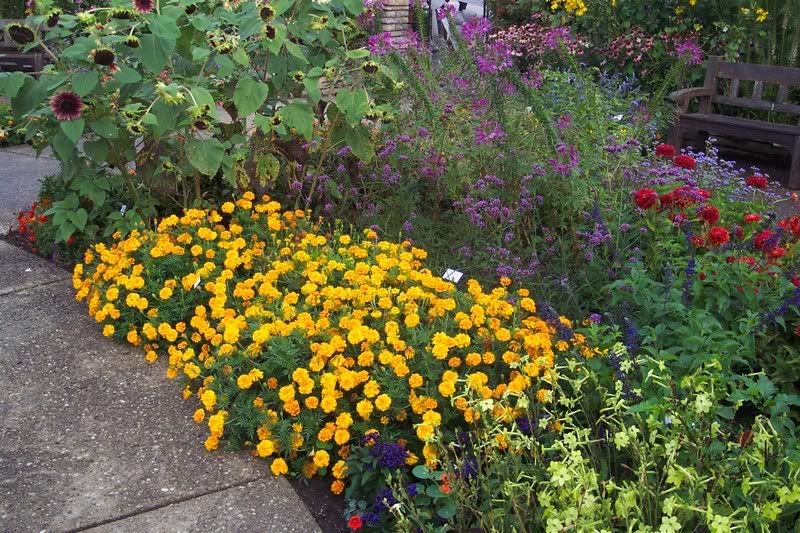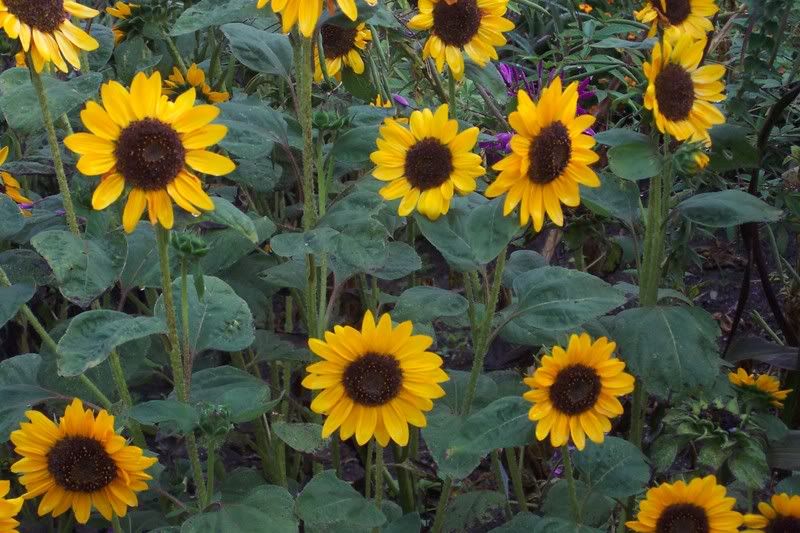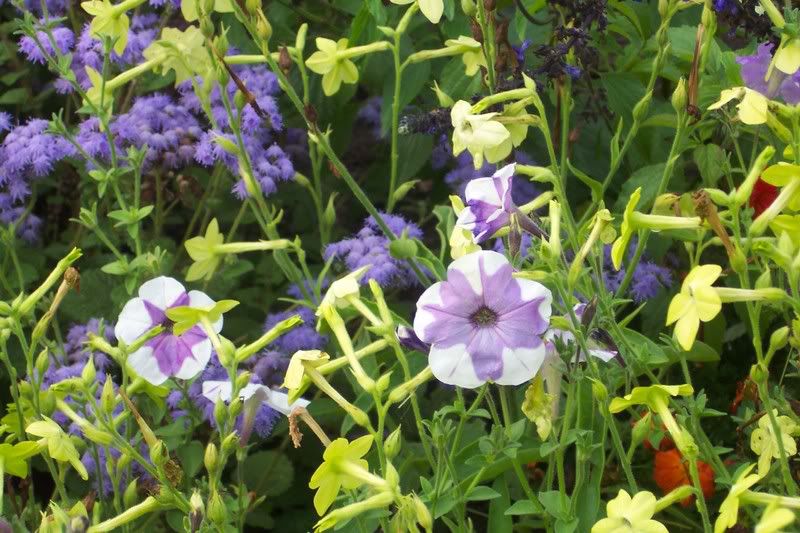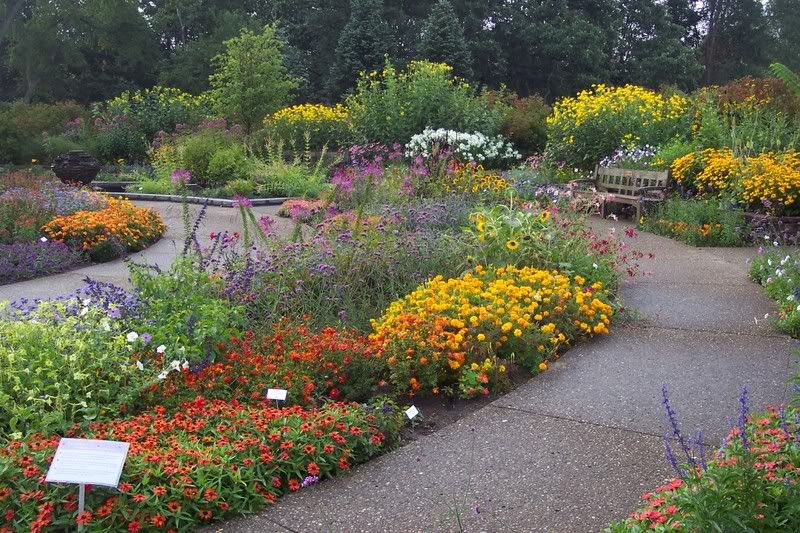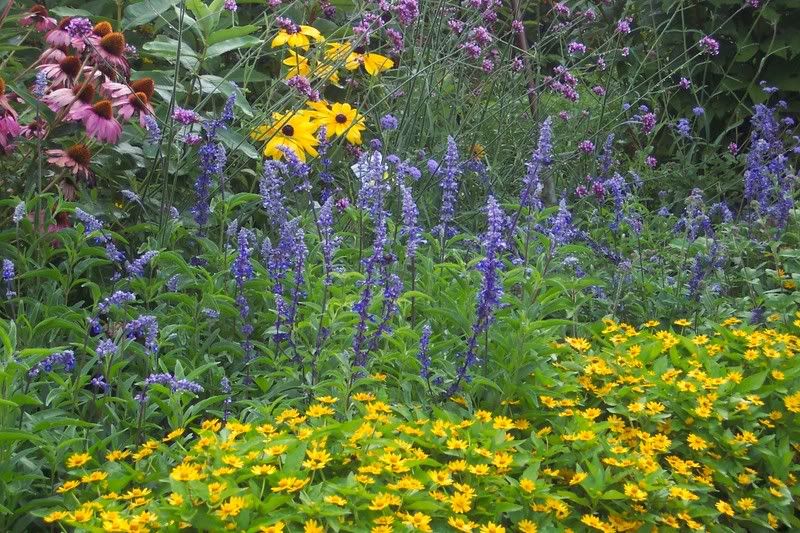
One of the annual flower color combinations that did well together this season is a blue and gold patch in a skinny bed two feet deep and ten feet long. It has a medium dark blue Salvia with the varieity name of ‘Gruppenblau’ (which is German and must mean some kind of blue) in the back of the bed. With a medium green coarse leaf and tall (24 -36 inch) wand like spikes covered with small two lipped petaled flowers, this blue salvia is at the top of my list of favorite flowers. Last year we saved seeds from it from plants that were taller than the rest and had slightly bigger flowers. That’s what I planted in this spot and was rewarded with all of these plants being about 36 inch tall. Even the stems of the flower are tinged with blue. It is very striking.
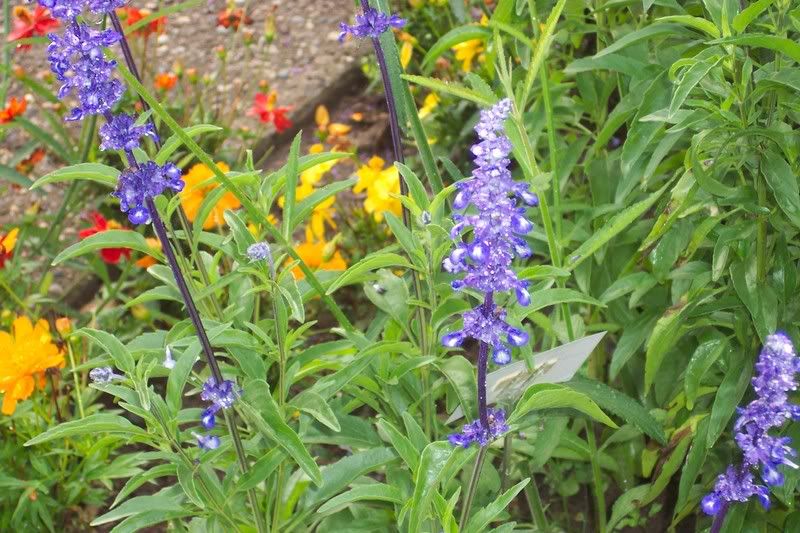
In front of the salvia is another favorite flower called Melampodium ‘Showstar’. this is the combo to plant if you want no maintenance! Healthy, full, rounded, 20 inch tall, lots of yellow gold 1 inch daisy blossoms. It has no disease and a great shape. The salvia’s tall and spikey shape complements the round full and shorter Melampodium. Both of them are still at peak bloom , have never needed deadheading and the leaves of both are still looking fresh and bright green. These colors look great with the goldenrods and the purple asters of the fall season.
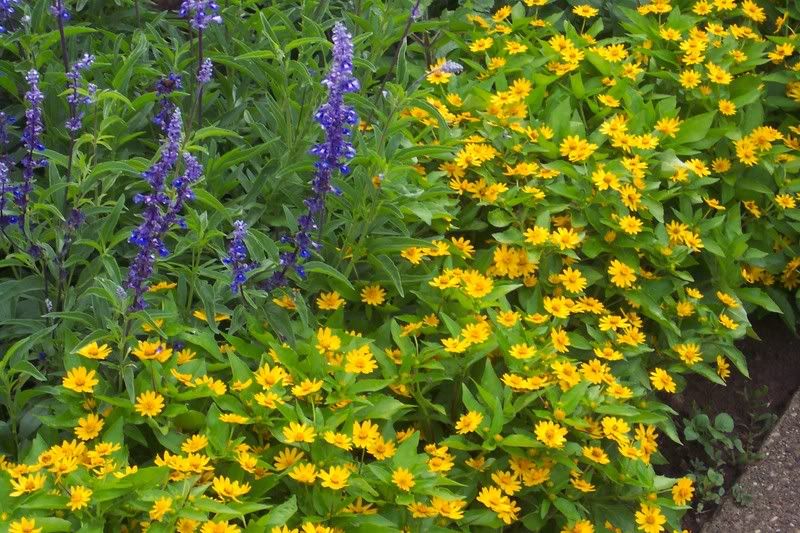
Behind me as I sit on the bench is a Monarch nectaring on a white phlox called ‘David’. This is one of the best phlox – it’s resistant to mildew and is always upright with a clean green look. Behind the phlox is a patch of Joe Pye Weed 6 feet tall. Bees and butterflies love Joe Pye, too.
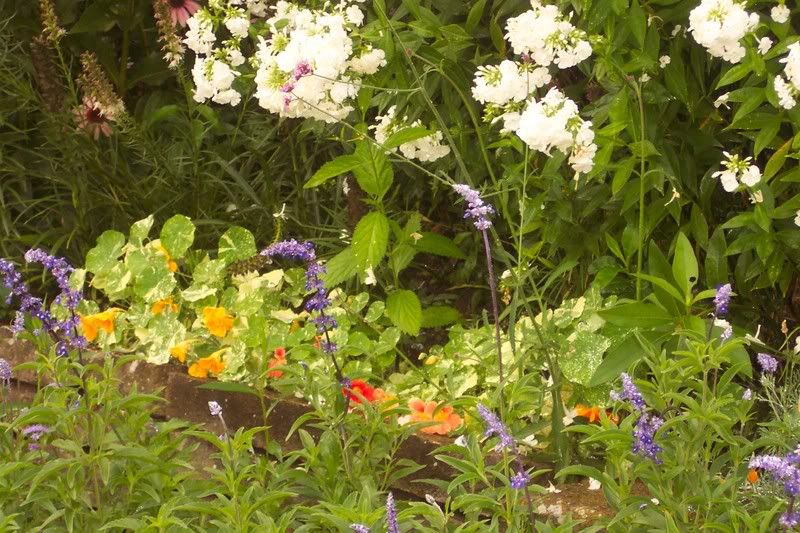
White Phlox 'David' is at the top of the photo.
Today since it is almost October would be a good day to go out and pull any poor looking plants and compost them. we have been cleaning up around our beds and cultivating the bare patches when we pull anything out. It makes this rest of the bed look even better.
That’s it for today. I am going to go out and enjoy this beautiful weather while it lasts!
bye for now, Judy

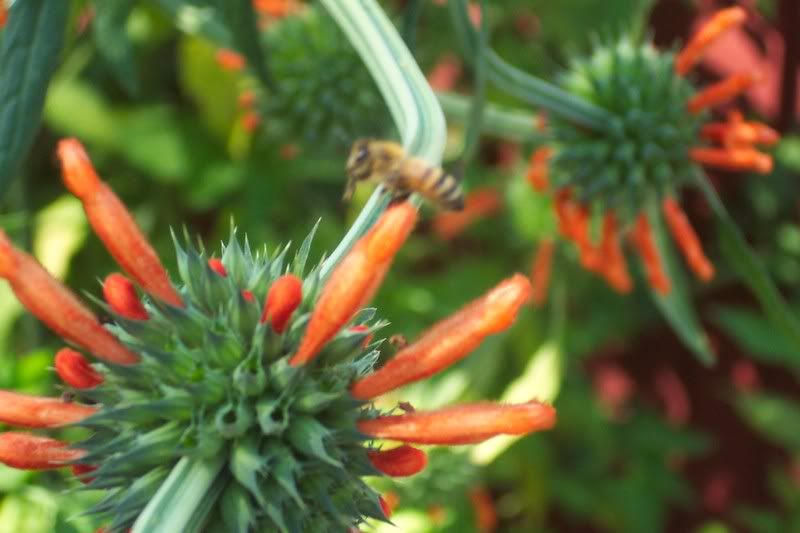
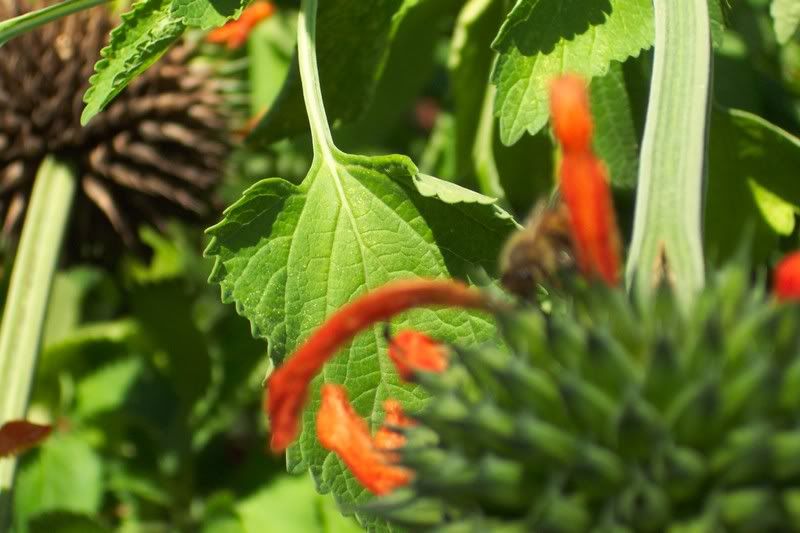
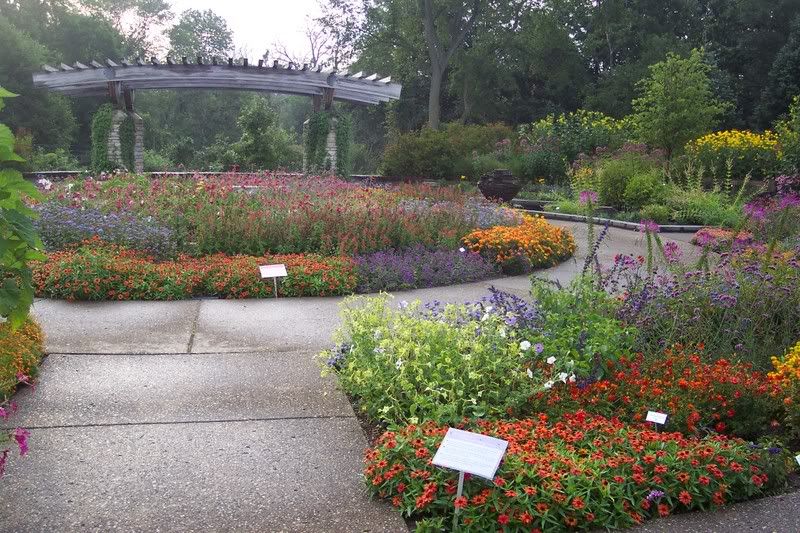 In In the centers of the beds, in the annual garden that I take care of, are the taller flowers. Cleome ‘Violet Queen’ is 4 feet tall, with a cluster of pure, purple, funnel shaped flowers. It starts blooming early and continues to bloom as it gets taller. It has little thorns on it so I like to keep it away from the outer edges of beds so people don’t accidentally get scratched.
In In the centers of the beds, in the annual garden that I take care of, are the taller flowers. Cleome ‘Violet Queen’ is 4 feet tall, with a cluster of pure, purple, funnel shaped flowers. It starts blooming early and continues to bloom as it gets taller. It has little thorns on it so I like to keep it away from the outer edges of beds so people don’t accidentally get scratched. 